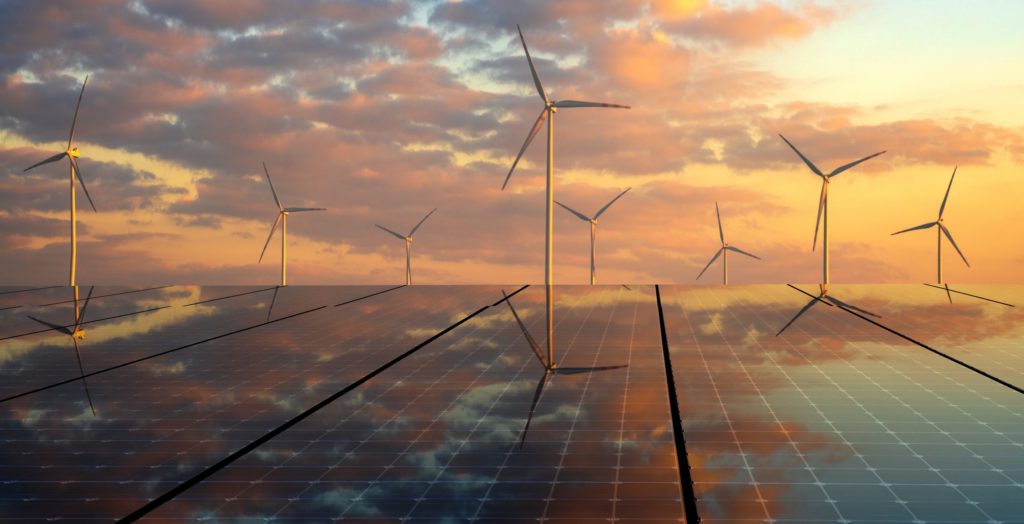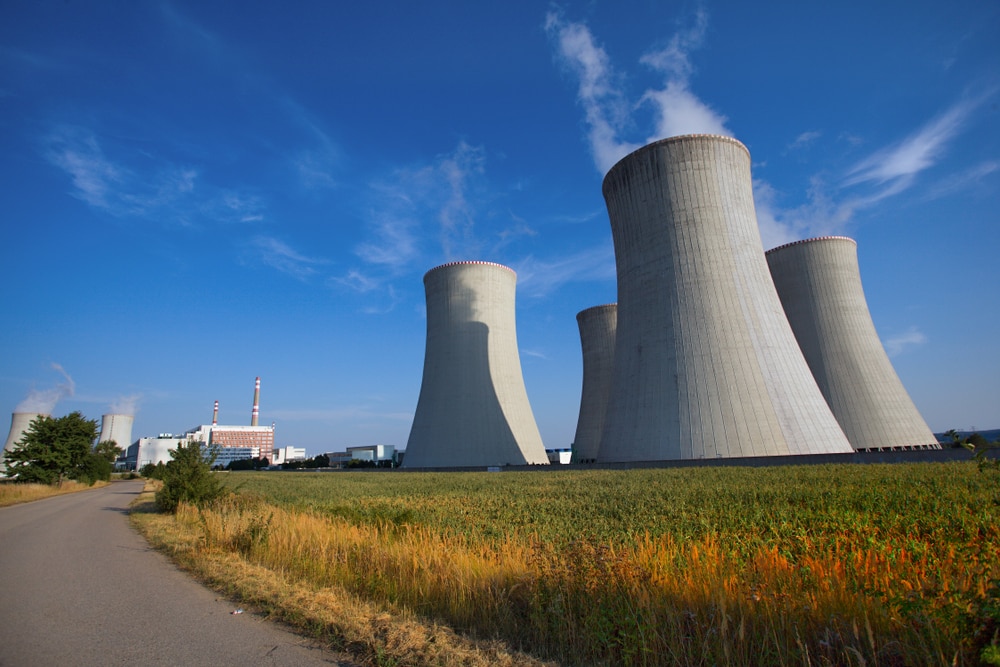Testimony for the Senate Finance Committee on Tax Incentives in the Inflation Reduction Act: Jobs and Investment in Energy Communities
(Update: Watch the full hearing here.)
Submitted Statement of
Philip Rossetti
Senior Fellow, Energy & Environment
R Street Institute
Before the
Committee on Finance
United States Senate
Hearing on
Tax Incentives in the Inflation Reduction Act:
Jobs and Investment in Energy Communities
May 18, 2023
Chairman Wyden, Ranking Member Crapo and distinguished senators:
Thank you for holding this hearing today on the effect of tax incentives in the Inflation Reduction Act on jobs and investment in energy communities. My name is Philip Rossetti, and I am a senior fellow for Energy and Environment at the R Street Institute (R Street). My work focuses on the effects of U.S. energy policy on environmental outcomes, energy costs, energy security and the economy.
In my testimony today, I would like to make three key points:
- The fiscal condition of the country is exceptionally poor. High existing debt combined with high spending and rising interest rates, as well as weak projected long-term growth, mean that the nation is on an unsustainable fiscal trajectory, which will have overall adverse effects on the American public.
- The design of the tax credit incentives for energy under the Inflation Reduction Act (IRA) incurs a cost to the American public that, at present, does not seem to be outweighed by any reduction in inflation or overall improvement to employment.
- From an energy policy perspective, the focus of the previous Congress on clean energy subsidies over permitting reform creates a cost-inefficient emission abatement scheme that will primarily enrich companies that would have invested in clean energy even without the IRA.
Worsening Economic Outlook for the Nation
In considering the effect of policies that have introduced additional subsidies, such as the IRA, it is important to keep in mind the overall fiscal condition of the nation and the ability of taxpayers to support those spending efforts. Every dollar that Congress spends—presumably to benefit one party or achieve an outcome—comes at the expense of other Americans either now or in the future. Currently, the fiscal outlook of the United States is exceptionally poor, and debt-financed spending by the federal government entails costs to Americans that may outweigh the benefit of subsidies like those in the IRA.
According to The Budget and Economic Outlook from the Congressional Budget Office (CBO), the federal budget deficit for 2023 is projected to be $1.4 trillion.[1] There are currently 158 million taxpayers in the United States, and closing the deficit would cost over $8,000 in new taxes per taxpayer per year. Historically, the nation has relied on a growing economy or population to mitigate deficits, as was seen in the wake of World War II. However, the population of the United States is not growing as significantly as it has in the past, at only 0.5 percent annual growth before the COVID-19 pandemic and 0.1 percent growth in 2021, compared to 1.7 percent growth in 1961.[2] Additionally, the economic outlook is weak, with the CBO projecting a long-term growth rate of 1.8 percent, which is well below the 2.4 percent average prior to 2008 and the 3.2 percent average from 1974-2001.[3]
A major reason the budgetary and economic outlook for the nation is so poor is due to the rising cost of servicing existing debt. Prior to the COVID-19 pandemic, attitudes toward additional government spending were largely muted, with advocates of additional spending pointing out that low interest rates favored policy that utilized borrowing.[4] However, pandemic-relief policies focused on spending coupled with supply chains weakened by the pandemic, created conditions ripe for inflation. Relief policies infused cash into markets, which increased demand for goods that were becoming increasingly scarce, and inflation soared. In response, the Federal Reserve System has raised interest rates to 4.83 percent, up from 0.08 percent last year.[5]
With rising rates, the cost of servicing U.S. debt has also increased. The projected deficit by the CBO for 2023 is $1.4 trillion, but that is expected to increase to $2.7 trillion by 2033.[6] This deficit growth is largely driven by rising interest payments on public debt, which were $475 billion in 2022. Interest payments are expected to have a 35 percent increase this year to $640 billion and are projected to further rise to $1.4 trillion by 2033.[7] For context, by 2028 the United States will spend more on interest payments than the defense budget.[8]
An environment of high interest rates and above normal inflation carries significant costs to Americans. Additionally, the nation’s large debt means that either tax increases or spending cuts may be needed in the future. Policies that worsen this outlook, despite concentrating benefits to specific parties, carry an economic cost to Americans at large.
IRA Provisions Carry High Costs
The IRA contains many components, but in my testimony, I will focus on two broad aspects: the inflation reducing provisions (which are the tax increase) and the energy subsidies.
The IRA in general was estimated to increase savings and revenues to the federal government by $738 billion, while expending $499 billion, for a net revenue increase of $238 billion.[9] The largest revenue raising provision of the IRA is the introduction of a new corporate minimum tax. The revenue raising aspects of the IRA have a deflationary aspect because they reduce the after-tax income of Americans, which reduces their purchasing power and lowers demand for goods, thus easing inflation.
While a focus on corporate taxes is common in policy, it is important to bear in mind that corporations are not the point of final tax incidence, as corporations can pass those taxes onto other parties. Conventionally, it is understood that corporate taxes are paid for by corporate investors, workers and customers in varying degrees dependent upon prevailing economic conditions.[10] In general, empirical estimates have found that between 50 and 100 percent of corporate income taxes are paid for by corporate workers.[11] In fact, even corporate minimum taxes on “super-normal” returns like those present in the IRA are expected to have half their costs fall on corporate workers.[12]
The higher taxes in the IRA are expected to negatively impact the U.S. economy. For example, the CBO noted that the IRA’s corporate tax provisions are expected to reduce the incentives of corporations to invest in and do business in the United States since the benefit of their after-tax returns is diminished by the new policy.[13] Since it is expected that these burdens will at least partially fall on U.S. workers, the IRA’s provisions are expected to have a negative impact on employment. The Tax Foundation estimated that the IRA will reduce GDP in the long run by 0.2 percent, reduce real wages by 0.1 percent and lead to a loss of 29,000 full-time equivalent jobs overall.[14]
While the tax increases in the IRA in isolation would be expected to trade inflation for weaker economic growth, the IRA’s subsidies—particularly for energy—worsen inflation by spending. Initially, the IRA’s energy and climate provisions were expected to cost $391 billion and represent the largest portion of IRA spending.[15] Prior to the IRA, 10-year projected tax expenditures for all energy were projected at $159 billion, making the increase in expenditure from the IRA more than double the prior level of subsidy for energy.[16] But recent updates to estimates of the IRA’s energy-related tax provisions indicate that the spending—and consequently the inflation caused—may be greater than initially expected.
In the Joint Committee on Taxation’s estimate of repealing the IRA’s energy subsidies, the provisions which were estimated at about $270 billion initially are now valued at $570 billion.[17] It should be noted that this $300 billion increase in cost exceeds the initially estimated $238 billion of fiscal benefit the IRA was supposed to deliver, meaning that the IRA may not result in a net reduction of deficits at all.
Initially, the CBO estimated that the IRA would have a negligible effect on inflation, with a change of between -0.1 and +0.1 percent in inflation.[18] However, given that the spending of the IRA is now expected to potentially exceed its revenue increases, it is much more likely that the IRA will worsen, rather than improve, inflation.
Green Subsidies Largely Expected to Flow to Firms that Would Produce Green Energy Anyway
The policy intent of energy subsidies, generally, is to facilitate a specific economic outcome despite the cost to the public. For example, the Low-Income Home Energy Assistance Program (LIHEAP) is aimed at alleviating energy bills for low-income Americans and programs like the Advanced Research Projects Agency-Energy (ARPA-E) are designed to accelerate technological innovation. Achieving these specific policy outcomes is contingent largely upon the design, scope and scale of the subsidy programs.
Less effective forms of subsidy are ones that either do not incentivize behavioral change in the market, or that disburse subsidies to claimants that would have engaged in the subsidized activity regardless of receipt of the subsidy.
Last year, R Street analyzed the effectiveness of the IRA’s subsidies in accelerating clean energy growth. We found, consistent with other analyses such as Rhodium Group’s and Princeton University’s REPEAT Project, that if one assumes no regulatory constraints and favorably assumes one-to-one ratios of replacing fossil fuels with clean energy, the law could reduce energy-related carbon dioxide emissions by 12 percent relative to 2005 levels, bringing overall energy-related carbon dioxide emissions to 35 percent below 2005 levels.[19]
However, our study also found that of the total clean electricity generation through 2030 that would be eligible to claim the IRA subsidies, 67 percent of that generation would have been built even without the subsidy.[20] For context, this means that of the roughly $180 billion of clean electricity incentives initially projected, $120 billion is expected to go to projects that would have been built anyway.[21] As a result, large portions of the IRA’s subsidies are expected to be claimed by businesses for doing what they would have done anyway, making the policy effectively a wealth transfer from taxpayers to clean energy producers.
The wealth transference effect of the IRA’s energy subsidies is expected to largely benefit the wealthiest Americans. Economist Jason Furman, who chaired the Council of Economic Advisors under President Barack Obama, estimates that the top 1 percent of Americans will be the biggest beneficiaries of the IRA subsidies, receiving on average over $11,000 each.[22]
Additionally, some modifications to subsidy programs under the IRA are unlikely to yield any notable climate benefit. For example, modifications to subsidies for electric vehicles (EVs) were designed to incentivize domestic production. However, these changes have narrowed the possible claimants of the subsidy. Of the 91 models of electric cars and trucks on the market today, only 14 qualify for the IRA’s EV tax credit.[23] While this tightening of the tax credit can help to keep dollars in select markets, such as American-made vehicles, it should be noted that the effect of the policy is at odds with stated policy objectives of expanding EV adoption. In our analysis, we noted that baseline projections of alternative fuel vehicle sales, including EV sales, greatly exceeded the estimated cost of the subsidy, indicating that the IRA’s modifications to the EV subsidy would result in minimal, if any, climate benefit.[24]
Optimistically, though, we noted that some provisions of the IRA represented technical improvements to subsidy design.[25] The IRA’s transition of certain tax credits for electricity and fuels to be awarded based upon emission abatement rather than being awarded for specific technology types will, all else being equal, increase the emission benefit per dollar spent on subsidy. And some subsidies, such as those targeted at clean fuels, were at least directed at nascent technologies that are not yet fully commercialized, meaning the tax credits would be more likely to incentivize innovation, unlike most of the clean electricity tax credits that are directed to fully commercialized technologies like wind and solar power.[26]
Importantly, the effectiveness of any climate-related policy is dictated largely by the market conditions. In our analysis of the IRA, we noted that our projections of emission abatement were unrealistically optimistic because they assumed that capital was the primary constraint to clean energy adoption. More recently though, it seems that permitting and other barriers to market entry are more significant inhibitors of clean energy growth than capital availability.
An update to Princeton University’s REPEAT Project found that, without transmission growth, 80 percent of the potential emission benefits of the IRA would not be achieved.[27] Additionally, past R Street research has found that projects related to clean energy and transmission are more likely to require the most stringent level of environmental review: an environmental impact statement (EIS). R Street found that for National Environmental Policy Act decisions made by the Bureau of Land Management, only 0.3 percent of oil and gas projects require an EIS, but 12 percent of renewable projects do.[28] Additionally, research from the Brookings Institution has found that wind energy projects and transmission projects take longer to permit than fossil fuel projects.[29]
According to Lawrence Berkely National Laboratory, by the end of 2022 there were over 1,350 gigawatts (GW) of energy generation capacity in interconnection queues.[30] This is a 35 percent increase from the year prior.[31] Of this generation capacity, 1,250 GW is low-carbon.[32] Wait times to interconnect are also increasing. Historically, wait times were under 2 years prior to 2007, but rose to 4 years from 2018-2022 and reached a median of 5 years by the end 2022.[33] Simply put, almost all new electricity resources being built are for clean energy, and it is taking longer than ever to connect those resources to the grid.
The difficulties of building and siting resources that are subsidized under the IRA also inhibit the effectiveness of provisions in the subsidy structure designed to benefit workers or specific communities. For example, the IRA includes bonus subsidy under the production tax credit and investment tax credit for projects that are sited in brownfield sites or communities where coal mines or facilities have closed. However, since the primary issue of siting new clean energy is an issue of marrying potential generation and available transmission resources, and not of funding, such provisions are likely to have only a minimal impact in steering projects to areas that would not otherwise be considered absent the subsidy bonus.
Conclusion
While substantial subsidies in the IRA—which seem to be exceeding initial estimates of cost—may benefit subsidized firms, they cause broader harm to the American public through tax increases and inflation. The design of the subsidies, which largely benefit claimants for behavior they would have undertaken anyway, means the benefits of the subsidies will mostly be concentrated to the wealthiest Americans. Efforts to steer clean energy growth to specific communities may also fail to bear fruit, as investment decisions and growth are increasingly a function of permitting and siting constraints rather than capital availability.
Thank you again for holding this hearing on the effects of the Inflation Reduction Act and your consideration of my views. I look forward to any questions you may have.
[1] Phillip L. Swagel et al., The Budget and Economic Outlook: 2023 to 2033, Congressional Budget Office, February 2023, p. 6. https://www.cbo.gov/system/files/2023-02/58848-Outlook.pdf.
[2] “Population Growth (annual %) – United States,” The World Bank, 2022. https://data.worldbank.org/indicator/SP.POP.GROW?locations=US.
[3] Swagel et al., p. 50. https://www.cbo.gov/system/files/2023-02/58848-Outlook.pdf.
[4] Heather Long, “Economists increasingly say it’s acceptable for the U.S. to take on more debt—for the right reasons,” The Washington Post, Jan. 14, 2020. https://www.washingtonpost.com/business/2020/01/14/economists-increasingly-say-its-ok-united-states-take-more-debt-right-reasons.
[5] Federal Reserve Economic Data, Federal Funds Effective Rate, St. Louis Fed, May 1, 2023. https://fred.stlouisfed.org/series/FEDFUNDS.
[6] Swagel et al., pp. 6, 17. https://www.cbo.gov/system/files/2023-02/58848-Outlook.pdf.
[7] Ibid.
[8] Ibid.
[9] “CBO Scores IRA with $238 Billion of Deficit Reduction,” Committee for a Responsible Federal Budget, Sept. 7, 2022. https://www.crfb.org/blogs/cbo-scores-ira-238-billion-deficit-reduction.
[10] Greg Mankiw, “Corporate Tax Rates,” Greg Mankiw’s Blog, May 3, 2006. https://gregmankiw.blogspot.com/2006/05/corporate-tax-rates.html.
[11] Stephen J. Entin, “Labor Bears Much of the Cost of the Corporate Tax,” Tax Foundation, Oct. 24, 2017. https://taxfoundation.org/labor-bears-corporate-tax.
[12] Ibid.
[13] Phillip L. Swagel, “Economic Analysis of Budget Reconciliation Legislation,” Congressional Budget Office, Aug. 4, 2022. https://www.cbo.gov/system/files/2022-08/58357-Graham.pdf.
[14] Alex Durante et al., “Details & Analysis of the Inflation Reduction Act Tax Provisions,” Tax Foundation, Aug. 12, 2022. https://taxfoundation.org/inflation-reduction-act.
[15] “CBO Scores IRA with $238 Billion of Deficit Reduction.” https://www.crfb.org/blogs/cbo-scores-ira-238-billion-deficit-reduction.
[16] Office of Tax Analysis, Tax Expenditures FY2023, U.S. Department of the Treasury, Dec. 9, 2021, p. 22. https://home.treasury.gov/system/files/131/Tax-Expenditures-FY2023.pdf.
[17] William McBride and Daniel Bunn, “Repealing Inflation Reduction Act’s Green Energy Tax Credits Would Raise $570 Billion, JCT Projects,” Tax Foundation, April 26, 2023. https://taxfoundation.org/inflation-reduction-act-green-energy-tax-credits-analysis.
[18] Swagel, “Economic Analysis of Budget Reconciliation Legislation.” https://www.cbo.gov/system/files/2022-08/58357-Graham.pdf.
[19] Philip Rossetti, “Potential Effects of the Inflation Reduction Act on Greenhouse Gas Emissions,” R Street Institute, Sept. 27, 2022. https://www.rstreet.org/commentary/potential-effects-of-the-inflation-reduction-act-on-greenhouse-gas-emissions.
[20] Ibid.
[21] Ibid.
[22] Jason Furman, “Will the Inflation Reduction Act Affect the Distribution of After-tax Income?” Harvard University, March 30, 2023. https://www.brookings.edu/wp-content/uploads/2023/02/2b_20230330-BPEA-climate-furman-comment.pdf.
[23] Tanya Snyder, “These 14 EVs are the only ones left that get the tax credit,” PoliticoPro, April 17, 2023. https://subscriber.politicopro.com/article/2023/04/ev-treasury-department-regulation-00092123.
[24] Rossetti. https://www.rstreet.org/commentary/potential-effects-of-the-inflation-reduction-act-on-greenhouse-gas-emissions.
[25] Ibid.
[26] Ibid.
[27] Jesse Jenkins et al., “Electricity Transmission is Key to Unlock the Full Potential of the Inflation Reduction Act,” Princeton University, September 2022, p. 4. https://repeatproject.org/docs/REPEAT_IRA_Transmission_2022-09-22.pdf.
[28] Philip Rossetti, “The Environmental Case for Improving NEPA,” R Street Institute, July 7, 2021. https://www.rstreet.org/commentary/the-environmental-case-for-improving-nepa.
[29] Rayan Sud et al., “How to Reform Federal Permitting to Accelerate Clean Energy Infrastructure: A nonpartisan way forward,” Brookings Institution, Feb. 13, 2023. https://www.brookings.edu/wp-content/uploads/2023/02/20230213_CRM_Patnaik_Permitting_FINAL.pdf.
[30] “Queued Up: Characteristics of Power Plants Seeking Transmission Interconnection As of the End of 2022,” Lawrence Berkely National Laboratory, April 2023. https://emp.lbl.gov/queues.
[31] Joseph Rand et al., “Queued Up: Characteristics of Power Plants Seeking Transmission Interconnection As of the End of 2021,” Lawrence Berkely National Laboratory, April 2022. https://emp.lbl.gov/publications/queued-characteristics-power-plants-0.
[32] Joseph Rand et al., “Queued Up: Characteristics of Power Plants Seeking Transmission Interconnection As of the End of 2022,” Lawrence Berkely National Laboratory, April 2023.
[33] Ibid.









